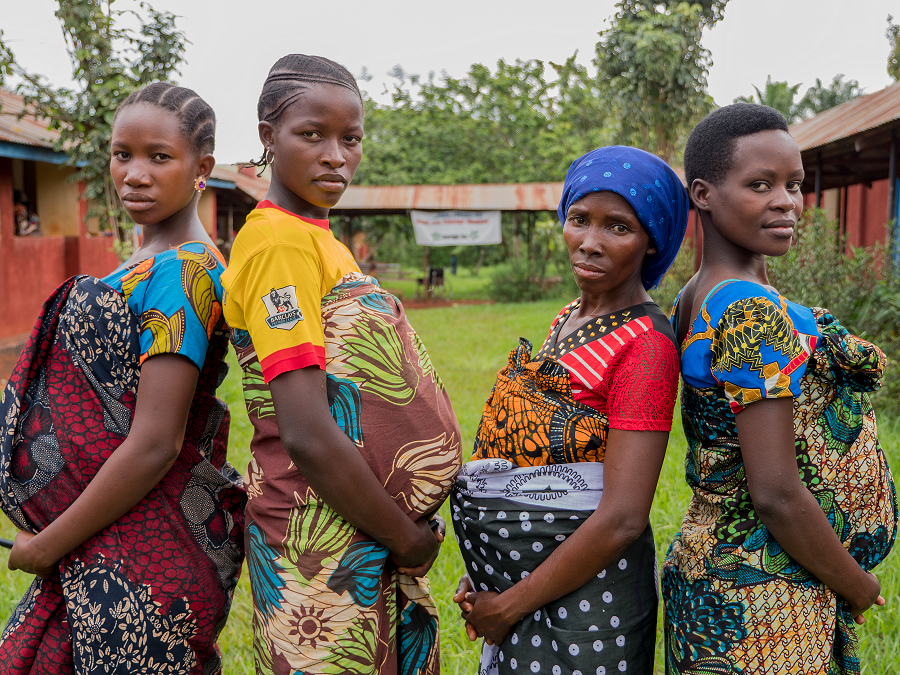My Time at 1,000 Days Exploring Maternal Health and Nutrition

My passion for maternal health and nutrition began when I volunteered as a local community nutritionist and maternal advocate with the United Nations Relief and Works Agency for Palestine Refugees in the Near East (UNRWA) program serving women in Palestinian refugee camps. It continued when I set up a clinic to address maternal nutrition, translating the science of nutrition into understandable information about food before, during, and after pregnancy. Today, I am serving as a Global Policy and Advocacy Program Associate Fellow with 1,000 Days.
In this role, I have had wide exposure to issues related to women’s health and nutrition and I found it both important and interesting to learn more about what is still of huge concern in the world of maternal health: maternal mortality. Maternal death can happen while a woman is pregnant, during labor and delivery, or in the 42 days after childbirth or the termination of pregnancy.
Who’s at risk?
Every day, approximately 830 women die from preventable causes related to pregnancy and childbirth with 99% of all maternal deaths occurring in developing countries. While it’s much safer to have a baby today than in the past, it’s still not safe for everyone. Not every woman has access to or can afford regular prenatal care, good nutrition and a skilled health practitioner at her delivery. At the same time, age, race, and the location where you deliver can unfairly determine your chance of survival. See the top 10 countries with the highest maternal mortality rates.
Why Do Women Die?
Poor nutrition before, during and after pregnancy can increase a woman’s risk for complications. Of the five pregnancy complications that account for nearly 75% of all maternal deaths, three are related to nutrition.
1. Severe bleeding (Mostly Postpartum Hemorrhage – PPH)
Every year about 14 million women around the world suffer from PPH. And is not only associated with nearly one quarter of all maternal deaths globally but is also the leading cause of maternal mortality in most low-income countries.
An anemic pregnant woman has a higher risk of experiencing PPH. During pregnancy, the risk of iron deficiency anemia increases as a woman’s body needs to provide nutrients for herself and her child. In fact, anemia still affects 40% of pregnant women worldwide. Interventions that increase iron uptake and stores such as oral iron pills, prenatal vitamins, and diet rich in iron and folic acid such as (leafy veggies, meat and poultry, eggs, etc.) reduce blood loss and infection, and address other micronutrient deficiencies could prevent at least half of all anemia cases.
2. High blood pressure during pregnancy (Pre-eclampsia and Eclampsia )
Eclampsia begins in the placenta, the organ that nourishes the fetus throughout pregnancy and can pose a serious health risk for a woman and her child. Early in pregnancy, new blood vessels develop and evolve to efficiently send blood to the baby through the placenta, but sometimes those blood vessels do not form properly and can cause serious health complications. While causes of eclampsia vary, inadequate diet can further increase a woman’s risk. In populations with low dietary calcium intake WHO recommends a daily calcium supplementation (1.5 g–2.0 g oral elemental calcium) for pregnant women to reduce the risk of pre-eclampsia.
3. Premature labor and Complications from delivery.
Premature labor also has varied causes, including an abnormally low blood volume. This can be prevented with a well-balanced diet rich in a variety of macro- and micronutrients and could significantly decrease premature labors. In addition, there are several promising interventions such as calcium supplementation in women with low calcium intake, iron, zinc, magnesium, and fish oil supplementation.
Key takeaways:
Linking global maternal mortality and nutrition is a clear yet missed opportunity in solving this issue. Advocates must continue to push for:
- Scaling up high impact nutrition interventions, especially by reducing anemia and addressing calcium deficiencies. Integrating these nutrition-specific interventions into maternal and child health programs should be a priority.
- A focus on girls and women at all stages of life. There is a need for a much more proactive approach that does not focus solely on women’s nutrition during pregnancy. Good health and nutrition throughout a woman’s life allows her to thrive – and is the key to a healthy pregnancy.
- The need to extend and strengthen data collection and analysis for women’s nutrition. While more data is important, it is also important to better utilize and analyze existing nutrition data to further understand the relationship between malnutrition and pregnancy complications. Only by doing so we will be better positioned to respond to the needs and priorities of women and girls.
- A holistic approach that focuses on the importance of delivering good quality care for all. Nutrition outcomes are also improved by integrating water, sanitation, and hygiene (WASH) and other nutrition-sensitive interventions.
As for you readers, you too can join the fight, by lending support to organizations like 1,000 Days that are working to enact lifesaving efforts for nutrition. Although my journey as a fellow with 1,000 Days is coming to an end, I know that a great journey based on the experience I gained here is still ahead of me! I feel privileged to have spent almost a year working with this awesome team of advocates that are fighting for every mom and baby around the world.
